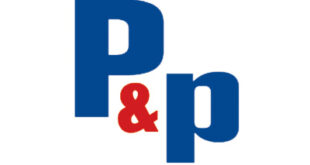Digital textile printing is one of the most exciting market opportunities in the print and textile supply sectors, according to the latest exclusive market data from Smithers Pira.
Growth is expected to grow by 12.3% in the years from 2016 to 2021, which will see the market more than double in value over five years from €1.17 billion to €2.42 billion in 2021.
Dr Justin Hayward, author of the report, said: “Growth is continuing at an attractive pace for investors and large corporations. This is witnessed by very important merger and acquisition activity in the past two years, with conglomerates from Japan and the US creating groups of companies. Old family textile printing businesses have been purchased and are being incorporated into these larger businesses combining expertise inks and machines.
“Global near-exponential growth rates cannot be sustained in the long-run as a market matures; but several very high growth regions remain. The revolution digital printing has created in graphics, and more recently in ceramics, shows a market penetration of over 70% can occur within a few years, if there is extensive cost parity or better, and if barriers to change are removed.”
In 2016 for textiles the market share for digital processes is 2.8% of overall volume. But digital’s share is set to boom in a segment where the mean growth is just 3%. As this develops, major print companies are increasingly taking an interest in the textile segment, fostering the development of new business models, print heads, inks, media, and high throughput machinery.
The greatest acceleration across the study period will be in clothing, which has the key sub-segments of fashion, haute couture and sportswear. Household textiles are predicted to grow at the next fastest rate. Displays and signage are growing somewhat more slowly –from a larger base – but will maintain double digit annual growth across the Smithers study period, which will convert into the largest absolute increase in value for 2016-2021. Technical textiles will lose ground slightly, which is indicative of a lack of visibility of, or focus on, these smaller niche markets.
Quick turnaround is an increasing priority as the fashion segment embraces multiple mini-seasons and print-on-demand delivery models. This suits inkjet production with its reduced set up times. Furthermore it is supported by, and is supporting, the growing availability of web-to-print platforms. These portals are also enabling value web approaches – generating direct online sales of digitally printed clothing, and increasingly household décor too.
Global textile industry dynamics are changing and the importance of Asian economies continues to increase, though there is also some backshoring/reshoring of production to North America and Europe to ensure quality in high-value applications. The parallel trend of near-shoring – shortening global supply chains – was poised to benefit Turkey, though this is likely to be cancelled or postponed in the short term.
 Printwear & Promotion The Total Promotional Package
Printwear & Promotion The Total Promotional Package




